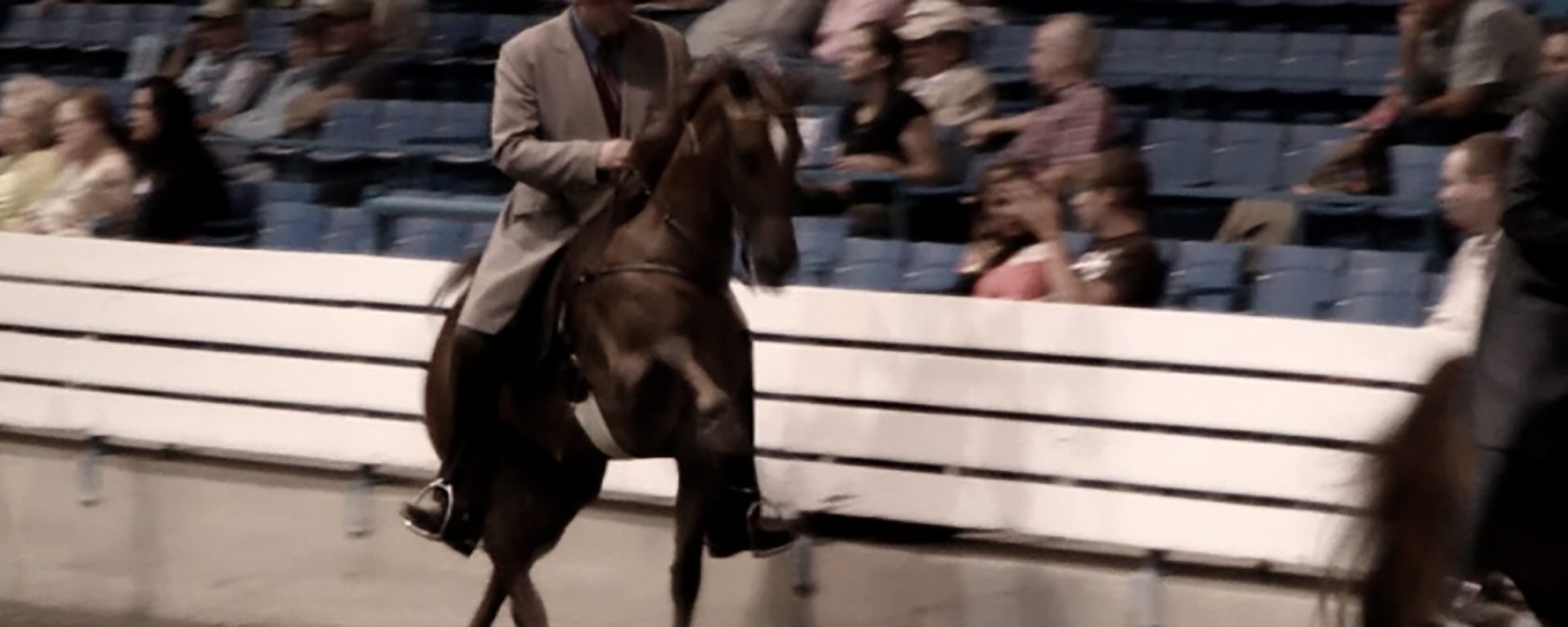By Sara Amundson and Kitty Block
Last week, members of the Humane Society of the United States’ Equine Protection team traveled to Tennessee to evaluate the condition of the horses at the 85th annual Tennessee Walking Horse National Celebration. In the weeks leading up to the show, we posted billboards in town to expose the cruelty of horse soring, painful methods that create an artificial, exaggerated high-stepping gait, which is celebrated at this annual event.
What our team witnessed at this spectacle was further evidence of the need for drastic reform in enforcement of the federal Horse Protection Act. Horses, some of them so obviously lame that a judge in any other equestrian discipline would have disqualified them from competition, struggled in the show ring, flailing their legs in the air in the performance of the pain-based “Big Lick” gait produced by soring.
John Allan Callaway, who served an eight-month federal disqualification ending in 2018 for alleged violations of the Horse Protection Act, won the Celebration’s grand championship.
The overriding question that our staff left Tennessee with was: Can this be the last Walking Horse Celebration where animal cruelty is displayed and even handsomely rewarded?
We believed we had that answer six years ago, when in 2017 under the Obama/Biden Administration’s Secretary of Agriculture Tom Vilsack, the U.S. Department of Agriculture finalized a rule to upgrade its regulations to end horse soring. But that rule was frozen by the incoming administration.
We sued the USDA for failing to follow the legal procedures to withdraw a final rule, and when Vilsack returned as secretary of agriculture under the Biden/Harris administration, we hoped the agency would restore it. However, this July, the USDA announced that it would withdraw the rule legally.
We and more than 92,000 supporters objected to this during a comment period and urged the USDA to work swiftly to implement a new, strong rule to end soring.
Thankfully, the USDA has proposed such a rule that holds the promise of finally bringing relief to the victims of this cruelty.
The proposed rule does much of what the 2017 one did: It eliminates the use on Tennessee walking and racking horses of “action devices” to sore their ankles and pads nailed to their hooves that cause pain, conceal sharp or hard objects jammed into their tender soles, and hide other damage intentionally inflicted on the hooves.
But we believe that the rule should include spotted saddle horses, too, as they are also victims of soring, and ban the use on all three breeds of heavy shoes that are known to cause pain to and even tear off part of horses’ hooves. The USDA says it plans to delay the ban on hoof pads until 270 days after the rule’s finalization, claiming that horses need six to eight months to come down off the tall platform shoes (a claim rejected by the veterinary community), even though the agency says soring continues through their use. That’s not acceptable.
While the new rule replaces the failed existing industry-run self-policing scheme with one administered solely by the USDA, it appears to allow event managers to choose which USDA-approved inspectors to hire to diagnose horses for soring at their events. This leaves open the potential for inspectors to turn a blind eye to soring in order to secure more inspection jobs, as has been the case with industry inspectors in the current system.
Since USDA officials will likely only attend a fraction of events covered by the Horse Protection Act to observe and supervise approved inspectors, we contend that the agency should be the one to assign them to shows.
The comment period for the proposed new rule closes on Oct. 20. This rule, if implemented and enforced properly, has the potential to end the decades-long torment of horses in the Walking horse industry. So, it’s imperative that we all raise our voices to tell the USDA to implement the rule (with amendments needed to strengthen it) as soon as possible. That would truly finally be a cause for celebration.
Kitty Block is CEO of the Humane Society of the United States.




